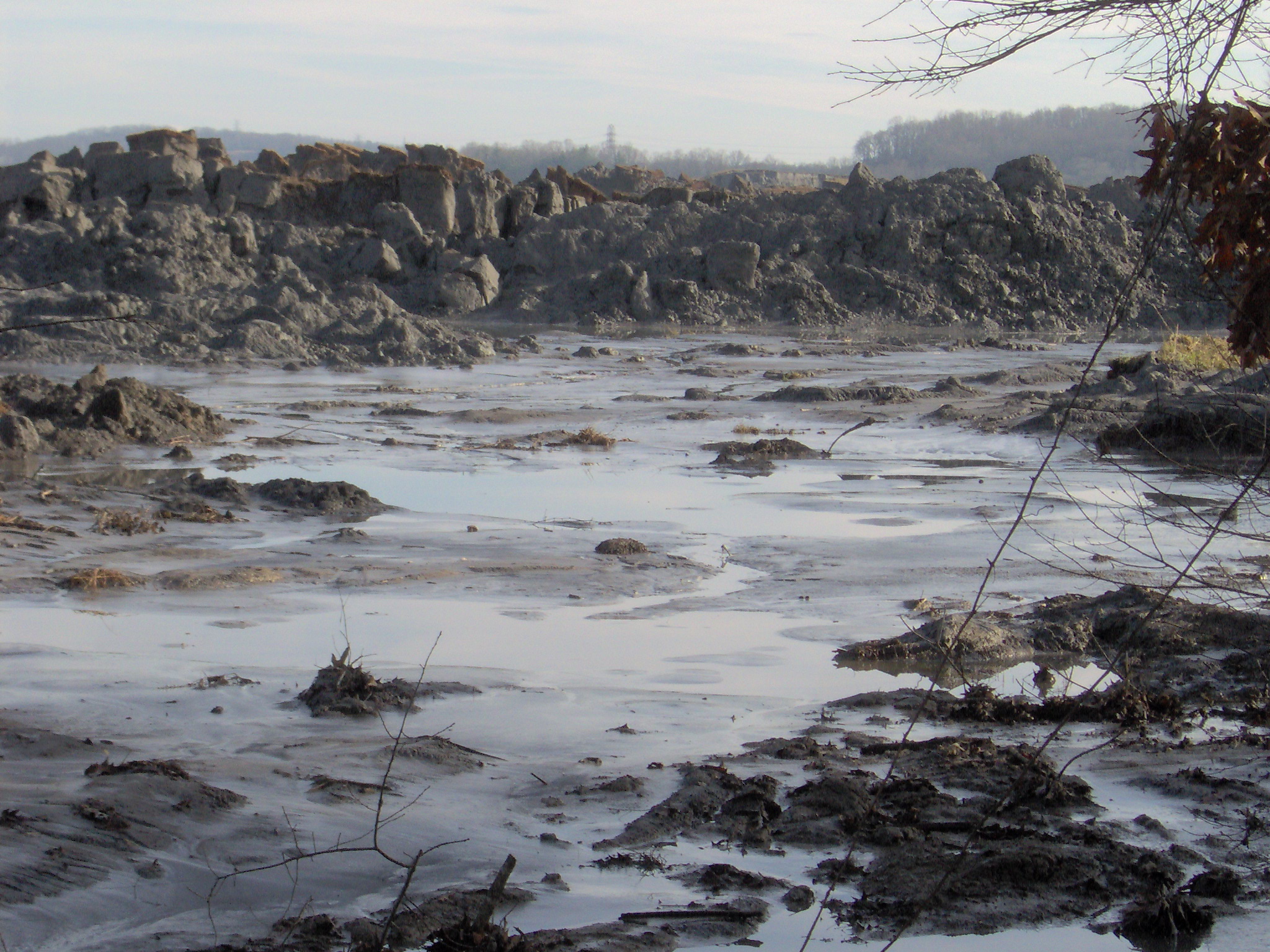Making the Case for Coal Ash Regulation
by Matthew Madia, 2/25/2010
A new report from the Environmental Integrity Project and Earthjustice uncovers dozens of cases where ponds of toxic coal combustion waste have leaked into nearby wetlands, streams, and groundwater supplies.
 Coal ash – sometimes referred to as fly ash, bottom ash, or, generally, coal combustion waste or residuals – is a byproduct of coal power plants captured from smoke stacks and stored in large retention ponds. The coal ash issue drew national attention in 2008 after a major spill sent the toxic goo cascading across parts of Tennessee.
Coal ash – sometimes referred to as fly ash, bottom ash, or, generally, coal combustion waste or residuals – is a byproduct of coal power plants captured from smoke stacks and stored in large retention ponds. The coal ash issue drew national attention in 2008 after a major spill sent the toxic goo cascading across parts of Tennessee.
The EIP/Earthjustice report makes the case that coal ash ponds are a serious hazard:
Coal-fired power plants generate nearly 140 million tons of fly ash, scrubber sludge, and other combustion wastes every year. These wastes contain some of the earth‘s most deadly pollutants, including arsenic, cadmium, lead, selenium, and other toxic metals that can cause cancer and neurological harm in humans and poison fish. This report brings to light 31 coal combustion waste sites that are known to have contaminated groundwater, wetlands, creeks, or rivers in 14 states.
EPA pledged to issue a notice of proposed rulemaking for coal ash ponds by the end of 2009 but has yet to do so. On Oct. 16, 2009, the agency sent a draft proposal to the White House Office of Management and Budget’s Office of Information and Regulatory Affairs (OIRA); 132 days later, the rule is still under review. The draft is not available to the public, as is customary with OIRA reviews.
EPA regulation could help prevent the types of contamination detailed in the report, the environmental groups argue. “Yet, incredibly, ash and other coal combustion wastes are not subject to any federal regulations,” the report says. “The EPA promised to close this loophole by proposing new standards before the end of 2009. Instead, the EPA‘s draft rule is stalled at the Office of Management and Budget, where an avalanche of lobbyists hope it will stay buried.”
Since the beginning of the review period for the rule, OIRA has convened more than two dozen meetings between EPA and opponents of EPA’s regulation, mostly from industry. There have been five meetings with environmental groups.
One industry representative, Tom Adams of the American Coal Ash Association, told the Tennessean that OMB stayed in listening mode during the meetings: “In meetings with the federal Office of Management and Budget, Adams said he and others talked and answered questions, but the federal officials would not answer any questions themselves, and mostly took notes and listened. ‘They were doing a pretty good job of maintaining their poker faces,’ he said.”
By OIRA’s own rules, it has 90 days to review a draft rule. In consultation with the agency, OIRA may extend the review period once by 30 days (which it did on Jan. 14). The extension expired on Feb. 13.
OMB spokesperson Kenneth Baer told BNA news service (subscription), “All parties are working hard to resolve the remaining issues.”
Image courtesy of Brian Stansberry, Wikimedia Commons.



